by Jocelyn Watkin | Oct 8, 2018 | Information |
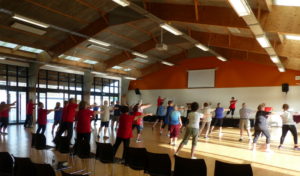 This is a post from October 2018.
This is a post from October 2018.
Free tai chi classes for beginners will happen on Monday 15 October and Wednesday 17 October 2018, 6.30 – 7.15pm in Manurewa.
After the free classes, a new beginners class will start on the following week. Same time, same days, same place (but not on Labour Day).
Tai chi is enjoyable, easy on your joints, flowing and will help you increase your fitness, reduce stress, improve your balance and stay stronger for longer. It is ideal for complete beginners. Seated tai chi is also available.
Come along and give it a try with a friendly bunch of people at a great venue. There is lots of free parking.
Classes are taught by Jocelyn Watkin, a fully-qualified, premier instructor with the Tai Chi for Health Institute.
Find out more on what to wear and what to expect at the classes.
To RSVP please text or phone the instructor, Jocelyn Watkin on 027 493 9851 or use the Contact Form

All of these Tai Chi for Health classes are approved with the BIG TICK for ACC and Age Concerns’ Community Group Strength and Balance Programme so you can stay “Stronger for Longer”
by Jocelyn Watkin | Sep 13, 2017 | Information |
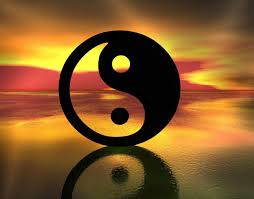
Look forward to better health and wellbeing
There are no more places available for this workshop (on 30 September 2017). Please contact Jocelyn to register your interest for the next workshop. Ph 027 493 9851 or use the Contact Form
Workshop: Saturday 30 September 2017, 9.30am – 12.45pm
Venue: Clayton Park School hall, Wattle Downs, Manurewa, Auckland
Ideal for beginners as well as advanced tai chi students. Adults of any age and high school students are all welcome.
Stressed or tired? Recovering from illness, grief or an injury? Worried about exams or pressure at work? If so, this rejuvenating tai chi for rehabilitation workshop will help you to:
- Boost your energy and strength
- Relieve stress
- Refresh your body, loosen your joints and ease your tensions
- Get a good night’s sleep
- Improve your blood circulation
- Increase your mental clarity and inner peace
- Improve your balance

Feel more balanced, anywhere, anytime, night and day
At the end of the workshop, you will have learned:
- A set of tai chi movements that you can do anytime, anywhere – at work, at home, while travelling – that will help to you to reduce stress, feel stronger and more balanced.
- A breathing technique to help calm and clear your mind and improve your overall health.
- A unique mantra to say to yourself while doing your tai chi to help you move smoothly and integrate your mind and body so you can feel more at peace and sleep better.
Adults of any age and high school students are all welcome. Bookings are essential.
Almost anyone can learn Tai Chi for Rehabilitation and Rejuvenation (TCR) as it can be done while standing, seated or lying down. TCR is a low impact exercise, gentle on your joints and is suitable for all adults and fitness levels. You do not need special shoes, clothing or equipment.
More details about the workshop:
- When: Saturday 30 September, 9.30am – 12.45pm. Please arrive between 9.15 – 9.25am
- Where: Clayton Park School hall, Cr Coxhead and Wattle Farm Roads, Wattle Downs, Manurewa, Map
- What to wear: Loose, comfortable clothing and flat shoes like sneakers. Bring a bottle of water and a snack. If you’d like to try TCR while lying down please bring your own yoga mat or similar.
- Parking: Plenty of free parking. Please note: the car park entrance for the school hall is off Wattle Farm Road
- Price: $67 per person. Current Kia Ora Tai Chi students @ $47 per person
- Optional extra: Buy the TCR practice DVD @ $30 to further assist you after the workshop.

Venue for the workshop: Clayton Park School hall
Ideal for beginners as well as advanced tai chi students. Places are limited to a maximum of 12.
TCR has been especially designed by a medical doctor (Dr Paul Lam) to improve health and wellness, especially when recovering from exhaustion and stressful situations, including illness, grief and accidents. The instructor for this workshop, Jocelyn Watkin, has been trained by Dr Lam and is qualified to teach TCR by the Tai Chi for Health Institute.
This workshop will help you to invest in your future health. Bookings are essential.
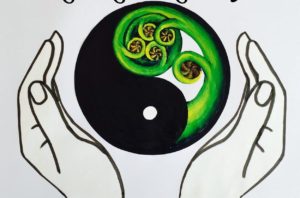
Your future health is in your hands
by Jocelyn Watkin | Mar 14, 2017 | Information |
 Energy – we all want more! Tai chi is the only exercise I know that seems to give you energy or at least makes you feel more energised.
Energy – we all want more! Tai chi is the only exercise I know that seems to give you energy or at least makes you feel more energised.
Good energy levels are strongly connected with good breathing, which is a key component in tai chi.
Of course, without breath there is no life. You’ve probably heard that old tai chi joke: Student asks: “Master, what is the secret of a long life?” Master replies: “Keep breathing for as long as you can.”
I’ve recently upgraded my instructor qualifications to include Tai Chi for Energy. This programme was created by Dr Paul Lam of the Tai Chi for Health Institute by combining the movements of two different tai chi styles, Chen and Sun:
- Chen style is vigorous and complex, combining fast and slow movements with powerful spiralling, seemingly elastic force.
- Sun style incorporates unique qigong (life energy) movements with agile stepping.
Together, these two contrasting styles enhance energy flows, which can relax, refresh and revitalise. As such, Tai Chi for Energy can help to improve your health and wellness, internal energy, and the ability to manage stress. This form is a natural sequel of Tai Chi for Rehabilitation (which I’m also qualified to teach).
I look forward to teaching my students this exciting and energising tai chi form.
Find out more:
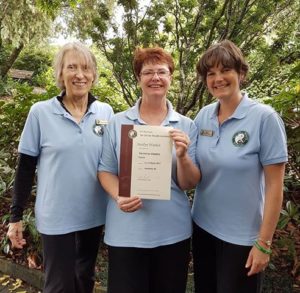
Jocelyn Watkin (centre) was awarded the Tai Chi for Energy Instructor qualification by Master Trainers Janet Cromb (left) and Tamara Bennett (right)
by Jocelyn Watkin | Oct 8, 2016 | Information |

Wish you had a magic wand?
Do you wish you had a magic wand so you could be better at tai chi? Do you believe that your lack of coordination will hold you back or that you’re not ‘naturally gifted’?
The truth is out – you don’t have to be genius or gifted at all. And, you don’t need magic, either. It turns out that what our mothers always said is actually right: Practice makes us better.
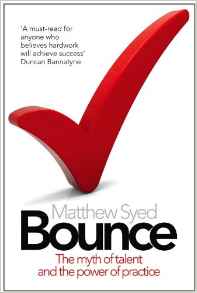
“Bounce” by Matthew Syed
I’ve been reading a great book on this topic by three-times Commonwealth table-tennis champion, Matthew Syed. Matthew explores what it takes to be successful in sport (and in life) in his book: Bounce: the myth of talent and the power of practice He proves that effort and sustained purposeful practice brings excellence.
So, how do you practice ‘purposely’? Here are some ideas:
- Set a regular tai chi practice time each day. It doesn’t matter what time of the day, just do it when it is the BEST time for you. If you have arthritis or are stiff, you will know when your joints are their best.
- Make a start, even if you only have a few minutes at that time. 5 minutes is better than nothing, as long as you warm up. 10 minutes is better than five. 20 minutes is ideal. It is better to practice every day than to have longer tai chi workouts for only two or three times a week.
- Start with the warm-up exercises or the Qi Gong breathing exercises.
Some students tell me they don’t like to practice in case they get it wrong. Here are more ideas to help:
- Everyone is different: age, body shape and some may have health issues or injuries. There are many different ways to do tai chi and never one perfect way.
- After the warm-up, do the tai chi form or moves you know best. Go over these several times and for as long as you as you feel comfortable. If you feel any pain, please stop immediately.
- Follow the essential tai chi principles: http://taichiforhealthinstitute.org/essential-tai-chi-principles-2/
- Follow along with a teaching DVD such as Tai Chi for Arthritis by Dr Paul Lam.
- Prepare questions to ask your teacher the next time you attend a class.

Remember, it is about effort – not talent (nor magic). Practice will help you to say Kia Ora (Hello) to better tai chi.
Find out more:

No need to wish upon a star to be better at tai chi
by Jocelyn Watkin | Sep 10, 2016 | Information |

Great Wall of China
What made me leave my tai chi school of nearly 14 years to become an instructor for the Tai Chi for Health Institute?
I had been stuck on a plateau for some time, due to the ‘one size fits all’ or ‘cookie cutter’ approach of my then tai chi school. I searched for more stimulation and development; I read books, trawled through the Internet and tried a couple of different tai chi schools. I even organised a tai chi tour to China in 2015 and climbed sacred Wudangshan (Wudang Mountain), the tūrangawaewae of tai chi (spiritual home and place to stand for all who feel connected to tai chi).
Other tai chi schools were iniitally helpful in my quest but they didn’t have what I was looking for long-term, or their type of tai chi aggravated an old injury I had.
On YouTube I discovered Dr Paul Lam, the founder and director of Tai Chi for Health Institute (TCHI). I was instantly struck by his openness, his formidable tai chi, his philosophy that tai chi is for everyone and the thorough medical research that he’d conducted to prove the health benefits of tai chi.
A quick search of the TCHI website revealed that one of his two master trainers for New Zealand, Tamara Bennett of Smiling Dragon Tai Chi & Qigong, offered classes at Pukekohe, only 25 minutes away from my home. I soon rocked up to her classes and was impressed.
As I am a qualified teacher for the New Zealand education system, I instantly spotted that Tamara understood teaching methodology and was following a lesson plan. This was the first time I had encountered this in my 20 years of learning martial arts. If someone is good at one skill (whether karate, tai chi, music, maths, cooking, etc) it doesn’t automatically follow that they’ll be good at teaching it. Teaching is an acquired skill that must be learned, just like any other skill. I found out later that Tamara was following the Stepwise Progressive Teaching Method, which had been devised and perfected by Dr Lam.
I was also blown away by her tai chi ability. Throughout my 14 years of tai chi, I had been told by my (now ex) instructors that people who teach it for the health benefits don’t do ‘proper’ tai chi. Well, this was ‘real’ tai chi alright. All of the essential tai chi principles were there in Tamara’s movements and form.
What’s more, she and her students were friendly and welcoming. The barriers I had previously encountered (my age, ethnicity and being female) were not held against me.
Very soon I was flourishing with TCHI’s mix of the Chen, Sun and Yang forms, especially the welcome addition of Qi Gong in the Sun style of tai chi. I loved the blend of Chinese and Western philosophy and medical knowledge. I knew that this was the tai chi school that I would like to be part of.

Tamara awarding my instructor certificates
I had not wanted to become a tai chi instructor until then. As a professional teacher, tai chi gave me a break from teaching. However, a career change meant that I was more open to become a tai chi instructor. When I discovered that TCHI had well-thought out and proven programme to teach instructors, I knew that I would take that path.
I am now a premier TCHI-Board Certified Instructor for four Tai Chi for Health Programmes (find out which ones here). I am also a member of the Tai Chi for Health Community in New Zealand.
I met Dr Paul Lam at recent instructor workshop. He is as genuine and open as he is on YouTube. His tai chi was even more formidable face-to-face than it is on YouTube.
Tamara and my fellow instructors encouraged me to start teaching my own classes. Two came along to my very first opening night to support me and, along with Tamara, they continue to be trusted colleagues that I can call on for advice. Thank you so much Tamara Bennett, Aria Tauroa and Ian Blaine.
A big ‘shout out’ to the Sunday Club guys, too. You know who you are. I could not have come this far without you so thanks for ‘being there’ for me.
I love teaching and I am able to incorporate all of my tai chi skills and knowledge, including from my wider martial arts and teaching background. My students come from all walks of life, are friendly and helpful with each other, and they all want to do well with their tai chi. I can see that they practice between classes and that’s pretty amazing when compared with my experience at other tai chi schools.
After being stuck on a plateau for so long I feel energised and excited about my tai chi and the future. TCHI has been the right move because it offers:
- A thorough teaching syllabus and proven teaching methodology, the Stepwise Progressive Teaching Method, which is backed up by teaching DVDs.
- Medical research and case studies to prove the health benefits of tai chi.
- Well-established Tai Chi for Health Programmes that maximise these health benefits.
- A TCHI Board-Certification process to become a Tai Chi for Health Instructor.
- Support from the NZ master trainers and fellow instructors (of TCHI) and through my membership of Tai Chi for Health Community in New Zealand.
- Adherence to the essential tai chi principles, i.e. this is ‘real’ tai chi
- A mix of the Chen, Sun and Yang tai chi styles, plus Qi Gong and meditation
- Tai chi for everyone including making it accessible to as many as possible, particularly those less able or who have health issues.
- Acceptance that people learn and move in different ways, according to their own style, body-shape, age, etc
- An open, welcoming and safe environment where know-how is shared and questions encouraged.
- Greater diversity and range of tai chi skills and knowledge, due to the acceptance that one person or ‘guru’ cannot know everything.
- Opportunities to advance my own tai chi, including weapons training, whether I wanted to be an instructor or not. I.e. advanced students are not held back because they are not instructors.
- Friendly people that know when to be serious about tai chi and also how to have fun with it.
- The positivity and determination of Dr Paul Lam (the founder and director of TCHI) to ensure the above points and over-arching kaupapa (guiding principles and thinking) are embedded into everything that TCHI stands for.
Find out more:
Photos from Wudangshan (Mt Wudang), Hubei province, China:

Jindian Temple at the summit of Wudang Mountain, 900 steps up

Mt Wudang summit (and the Jindian Temple) – view from the top

 This is a post from October 2018.
This is a post from October 2018.
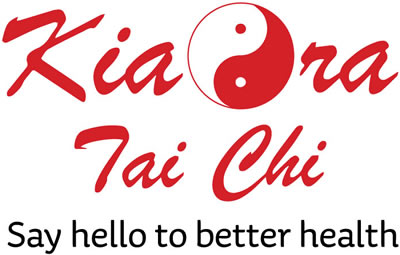




 Energy – we all want more! Tai chi is the only exercise I know that seems to give you energy or at least makes you feel more energised.
Energy – we all want more! Tai chi is the only exercise I know that seems to give you energy or at least makes you feel more energised.








